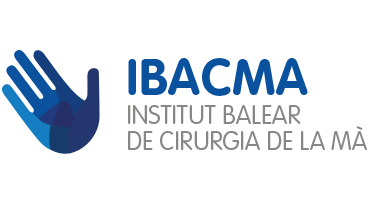At IBACMA, we also offer hand therapy treatments. These treatments include:
- The joint economy (includes ergonomic measures) training in activities of daily life
- Entrenament en activitats de la vida diària
- Functional activities
- Specific activities to increase the joint capacity, muscle power and tolerance to work of the upper limb.
These treatments are oriented to optimize the recovery time after a hand injury or a surgical intervention, complementing the conventional physiotherapy treatments, to minimize the recovery time and reincorporation to the activities of daily life.
The team in charge of hand therapy at IBACMA is composed of occupational therapists specialized in the treatment of different processes of hand and wrist injuries. One of the functions performed in our center is the manufacture of splints according to the specific needs of each patient being made according to the biomechanical principles of the hand.
The use of these splints is extremely important to provide an optimal recovery in certain pathologies. They are usually used temporarily and are part of a complete treatment program, always prescribed and supervised by the medical team (IBACMA hand surgeons).
The functions of these splints are: prevent deformities, immobilize or stabilize a joint to promote its function. Passive splints are made, intended to maintain a position of immobilization and / or correct deformities, and dynamic splints, which facilitate joint movement and the action of a weakened muscle. The material with which they are made is the Woodcast. It is a material of wood chips (recycled) and resins that when heated, can be modeled to the desired anatomical shape of the hand or wrist. When it cools it retains its shape very quickly.
Woodcast is a non-toxic material so it can be used without gloves, masks, ventilation hoods or water baths. This material is light, thin and breathable, it provides great comfort for patients and it is not necessary to take it off to get X-rays.
The splints make it possible to maintain certain joints in a rigid position and keep the joints that are not involved free so that the maximum function that the patient's situation allows is maintained. The use of this tool, sometimes, is fundamental to accelerate the rehabilitation processes and in this way reduce the possibility of complications in certain surgeries.
An example is in the repair of tendinous injuries, in which its use allows to put into practice protocols of passive mobilization or active precocious controlled, by what reduces the possibility of formation of adherences, rigidity articulate and accelerates the process of recovery. Another example of the use of splint in the recovery process would be in arthrolysis (treatment of joint stiffness) and suspension arthroplasties (treatment of rhizarthrosis or osteoarthritis of the base of the thumb).
Our team of therapists specializes in the recovery of both post-surgical and conservative processes of the various pathologies of the hand, which requires a complete knowledge of the structures, their function and involvement in the activity. To this end, specific tools are used to prevent dysfunction, slow down the progression of the pathology and restore function, so that the patient can become independent in the activities of daily life in the shortest possible

